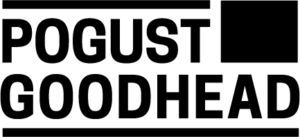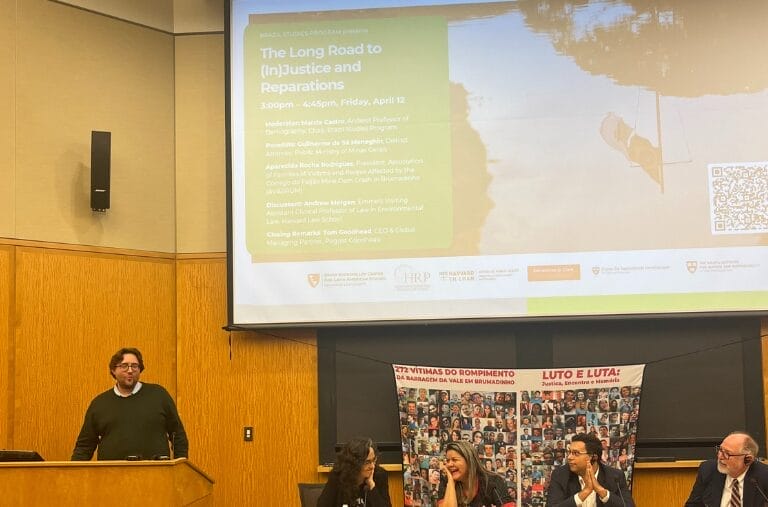On 5 January 2022, the Paris Judicial Tribunal (Tribunal Judiciaire de Paris)[1] ruled for the first time since group actions were introduced into French law in 2014, that a group action was admissible, and that the defendant was to be held liable.
The ruling is important not least because it concerns a civil lawsuit in the public health sector brought by the Association for the support of Parents of Children suffering from Anti Convulsant Syndrome (APESAC) against Sanofi-Aventis France S.A. (“Sanofi”), France’s largest pharmaceutical group.
Background of the case
By way of background, group actions were initially introduced in France in 2014 under the Consumption Code,[2] both in the areas of consumer and competition law. The scope of group actions was extended in 2016 to medical liability disputes,[3] and then to the environment, data protection, and discrimination at work.[4] A final set of legislation broadened the scope of group actions in 2018 to property lettings.[5]
APESAC initiated the public health lawsuit against Sanofi on behalf of fourteen families pursuant to Article L.1143-2 of the Public Health Code, which allows approved health associations to initiate group action proceedings on behalf of class members placed in a similar or identical situation, following the wrongdoing of a public health entity, and ultimately seek compensation for the members’ individual losses.
The association represents several thousands of families in which the mothers took a drug named Dépakine between 1970 and 2016 for their epilepsy during pregnancy, which caused birth defects in their children. APESAC contended that Dépakine medicine, marketed by Sanofi both in 1967 and 1987, contained an active ingredient called valproic acid or sodium valproate which could cause fetal congenital malformations and neurodevelopmental disorders. The argument brought by the association was that Sanofi did not inform pregnant women at that time, although medical literature was already reporting these risks as early as the 1970s. As such, out of the fourteen families represented by APESAC in the proceedings before the Paris Judicial Tribunal, medical experts concluded that the children’s facial deformities, dyspraxia, cognitive and neuro-visual disorders were directly linked to their mothers’ use of Dépakine at the time of pregnancy.
The ruling
The Paris Judicial Court ruled in favour of the association and of the victims on the basis that Sanofi had failed to comply with its duty of information and its duty of vigilance, and in this respect that the company had committed a “fault” within the meaning of Article 1240 of the Civil Code. The court further retained that the medicine commercialised by Sanofi was “defective” pursuant to Article 1245 of the Civil Code. In its ruling, the Court indeed notably reproached Sanofi that it had not carried out sufficient studies relating to Dépakine and its risks at the time and that the company should have modified the instructions of the Dépakine drugs it commercialised as early as 1984, while it only did so in 2006.
Regarding the size of the class, the Paris Judicial Court ruled that the class includes all women who took Dépakine drugs and who were pregnant in France between 1984 and January 2006 for congenital malformations, and between 2001 and January 2006 for developmental and cognitive disorders. Moreover, similarly, all children exposed in utero between the same dates are eligible to join the class. The class is further open to any indirect victim of the two previous categories of victims who are related and/or have an affective link with them and who can justify a prejudice of their own.
Estimates by the French National Health Insurance and the French Medicines Agency (“ANSM”), are that the active ingredient in Dépakine would have been responsible for malformations of 2,150 to 4,100 children and neurodevelopmental disorders of 16,600 to 30,400 children, making it one of the biggest scandals linked to the pharmaceutical industry in France.[6]
The Court also set a period of 5 years during which eligible members may join the class counting from the date of the ruling.
While this ruling against Sanofi brings high hopes to the extent that it is the first time that a French court formally finds a company liable since the group action regime was introduced in 2014, there are still some important caveats to make before concluding that France may have become, at last, a forum which is friendly to group litigation. The below provides an overview of issues within the current group action framework, which are analysed in light of the “Sanofi” ruling.
Duration of proceedings
First of all, French group actions follow an opt-in mechanism, which means that eligible members of the class who wish to be included in the group need to take positive steps to join the proceedings.[7] Accordingly, under French law, associations can only start advertising to potential members after a final, non-appealable ruling on liability has been rendered.[8] As stated above, the Paris Judicial Court in the Sanofi case opened the campaign for eligible members to join the group action for 5 years.
However, APESAC had originally brought the proceedings against Sanofi back in May 2017, so it already took almost 5 years to obtain a first judgment on liability, and it will thus take several more years before reaching a decision on compensation, especially taking into account Sanofi’s announcement that it would appeal the 5 January 2022 ruling. Consequently, under the current mechanism, it may take up to a decade before the victims of the Dépakine drug may hope to be compensated.
Standing of associations
A criticism that has been made in respect of the French group action regime is that it is the approved association itself and not the group that has a right of action. As such, only associations can bring proceedings, and in the current way the rules on eligibility of associations are drafted, because of their restrictiveness, at present only about fifteen associations in the area of consumer law have standing to bring group actions.[9]
Limitation of damages that can be claimed
A further issue with the current French group action regime is that not all losses can be compensated. Under French consumer law, solely economic losses can be sought, whereas under the environmental group action regime, only personal injury and material losses resulting from environmental damage can be compensated. To give an example, when group actions overlap in the areas of both environmental and consumer law, which is, for instance, the case in the worldwide car emission fraud “Dieselgate” scandal, members would not be able to claim for their full losses, but only with respect to the losses that are specifically tied to either the environmental or consumption group action framework. Such a system is, therefore, unlikely to be efficient.
Similarly, in the context of public health class actions, as stated in Article L.1143-1 of the Public Health Code, the action may only allow compensation for damage resulting from personal injury. Consequently, class members in the “Sanofi” ruling are currently prevented from claiming moral damages, although these would evidently constitute a large part of the prejudice they suffered.
Cost of litigation and publicity
In its January 2022 ruling against Sanofi, the Paris Judicial Court ordered Sanofi to pay €40,000 to APESAC to cover the costs incurred by the association to bring the proceedings. It further ruled that the company should also cover the cost of the second phase of the proceedings up to an amount of €120,000 for the association to advertise the lawsuit (e.g publications in newspapers) to the class. The amount granted by the Court is, however, well below the amount of €1,125,000 originally claimed by APESAC.
While the Court may review the costs incurred by APESAC in the second phase of the judgment pursuant to Article 700 of the French Code of Civil Procedure, it is clear that the sums granted will not cover the entirety of the costs already incurred by the association, as well as its future costs.
Moreover, due to the lack of an effective third-party litigation funding system in France and since members of the class do not participate in the cost of proceedings, associations can only rely upon their own resources. Ultimately, these costs may deter associations from bringing proceedings, and as such prevent victims of large corporations from seeking justice.
Towards a reform of the class action regime?
In this context, the French National Assembly released a report in June 2020 to address the aforementioned issues.[10] The report points out that since their introduction in French law in 2014, a mere 21 group actions had been initiated, with only 5 decisions being rendered, all of them dismissing the claim either on procedural grounds or for the defendant’s lack of liability. As such, the January 2022 ruling against Sanofi represents a novelty as it is the first time that a French company is found to be liable within France’s group action framework.
The National Assembly suggests an overhaul of the current group action regime. A summary of the main points of the report is provided below:
- Establish a common framework for all types of group actions in the Civil Procedural Code instead of providing for different group action systems across different laws (e.g Consumer Code, Environmental Code, etc.) in order to simplify procedures.
- Open the right of action to a greater number of associations so as to facilitate the initiation of proceedings. In this context, the National Assembly advocates that corporations should also be able to initiate group actions proceedings through associations.
- Associations should be able to advertise the group action before a ruling on the merits is rendered (as is the case under the current regime), in order to facilitate the identification of affected members of the class and quantification of the losses. This measure would counterbalance the lack of an opt-out mechanism under which potential claimants are automatically included in the proceedings unless they ‘opt-out’.
- Group action proceedings should provide for full compensation of damages, whatever their nature.
- Courts when awarding compensation to the winning party should better take into account the actual cost incurred by associations for bringing the proceedings.
- The new regime should introduce more dissuasive sanctions for companies, for instance by imposing civil penalties consisting of a percentage of a company’s turnover.
- Delays of proceedings should be reduced, for instance by means of conferring jurisdiction to specialised courts.
In parallel, the EU Directive on representative actions of the collective interests of consumers,[11] which was approved on 24th November 2020 by the European Parliament and published in the OJEU on 4 December 2020, provides some hope for simplifying group action proceedings within and across the EU Member States. EU Members States currently have until 25 December 2022 to transpose the Directive into their national laws.[12]
In a nutshell, while the Directive does not aim to replace existing national procedural mechanisms, it seeks to ensure a better indemnification of victims by widening the scope of representative actions, notably in the areas of consumer law, data protection, financial services, air and rail transport, tourism, energy, telecommunications, environment and health.[13] Accordingly, in the application of the Directive, France will have to increase the number of associations withstanding, provide financial assistance to associations,[14] notably by means of public funding,[15] and allow for the possibility of victims receiving full compensation for their losses. France has, in this regard, already introduced a bill to reform the French group action regime and transpose the provisions of the Directive.
Conclusion
The ruling against Sanofi is the first group action litigation in France in which a company has been held liable for its wrongdoing. Finally, there is hope for the victims of the Dépakine drugs to obtain the justice and compensation they deserve. This should be welcomed. However, the idea of France having a fully efficient and operative class action regime à la française, as it was promoted when group actions were introduced in French law in 2014, is to be nuanced. There remain too many issues within the current regime for France to qualify as one of the world’s most attractive group litigation fora.
France is certainly conscious of the shortfalls of its current system. Its future planned reform, in light of the EU Directive on representative actions, brings some degree of confidence that victims of large corporations will someday be able to fully recover their losses before French courts without extensive delays. This may, however, take some time.
References [1] Decision of 05 Janvier 2022 N°RG 17/07001 – N° Portalis 352J-W-B7B-CKP5L https://www.doctrine.fr/d/TJ/Paris/2022/UDD5D24F70ABA758A8DD0. [2] Law no. 2014-344 of 17 March 2014 on consumer affairs (“Loi Hamon”). [3] Law no. 2016-41 of 26 January 2016 on the modernisation of our health system. [4] Law no. 2016-1547 of 18 November 2016 on the modernisation of justice in the 21st century. [5] Law no. 2018-1021 of 23 November 2018 on the evolution of housing, development and the digital economy. [6] https://www.francetvinfo.fr/sante/grossesse/depakine/affaire-de-la-depakine-le-tribunal-de-paris-juge-sanofi-responsable-d-un-manque-de-vigilance-et-d-information-sur-les-risques-du-medicament_4905085.html. [7] This is to be contrasted with the opt-out model, followed for instance in the United States, Netherlands, and Portugal whereby the action is brought on behalf of the entire potential class of claimants without them proactively joining the proceedings. [9] Information report to the National Assembly 15th legislature - Mr Philippe Gosselin - Mrs Laurence Vichnievsky https://www.assemblee-nationale.fr/dyn/15/rapports/cion_lois/l15b3085_rapport-information#_Toc256000024. [10] Information report to the National Assembly 15th legislature - Mr Philippe Gosselin - Mrs Laurence Vichnievsky https://www.assemblee-nationale.fr/dyn/15/rapports/cion_lois/l15b3085_rapport-information#_Toc256000024. [11] Directive (EU) 2020/1828 of the European Parliament and of the Council of 25 November 2020 on representative actions for the protection of the collective interests of consumers and repealing Directive 2009/22/EC [12] Proposal for a new regime for group action, No. 3329, submitted on Tuesday 15 September 2020 https://www.assemblee-nationale.fr/dyn/15/textes/l15b3329_proposition-loi. [13] Directive 2020/1828, Annex I. [14] Ibid., Article 4. [15] Ibid., Article 20.










